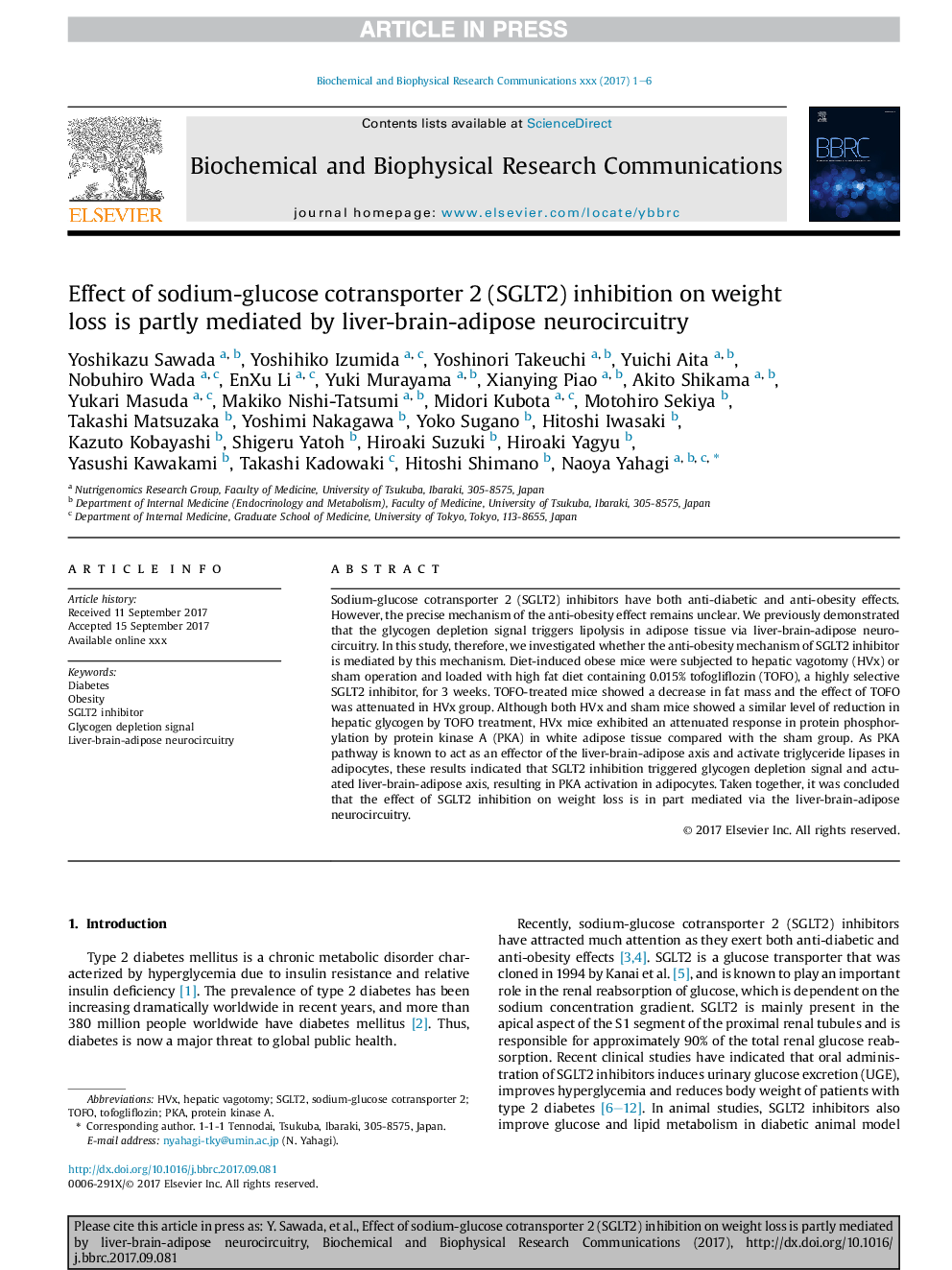| Article ID | Journal | Published Year | Pages | File Type |
|---|---|---|---|---|
| 5504601 | Biochemical and Biophysical Research Communications | 2017 | 6 Pages |
Abstract
Sodium-glucose cotransporter 2 (SGLT2) inhibitors have both anti-diabetic and anti-obesity effects. However, the precise mechanism of the anti-obesity effect remains unclear. We previously demonstrated that the glycogen depletion signal triggers lipolysis in adipose tissue via liver-brain-adipose neurocircuitry. In this study, therefore, we investigated whether the anti-obesity mechanism of SGLT2 inhibitor is mediated by this mechanism. Diet-induced obese mice were subjected to hepatic vagotomy (HVx) or sham operation and loaded with high fat diet containing 0.015% tofogliflozin (TOFO), a highly selective SGLT2 inhibitor, for 3 weeks. TOFO-treated mice showed a decrease in fat mass and the effect of TOFO was attenuated in HVx group. Although both HVx and sham mice showed a similar level of reduction in hepatic glycogen by TOFO treatment, HVx mice exhibited an attenuated response in protein phosphorylation by protein kinase A (PKA) in white adipose tissue compared with the sham group. As PKA pathway is known to act as an effector of the liver-brain-adipose axis and activate triglyceride lipases in adipocytes, these results indicated that SGLT2 inhibition triggered glycogen depletion signal and actuated liver-brain-adipose axis, resulting in PKA activation in adipocytes. Taken together, it was concluded that the effect of SGLT2 inhibition on weight loss is in part mediated via the liver-brain-adipose neurocircuitry.
Keywords
Related Topics
Life Sciences
Biochemistry, Genetics and Molecular Biology
Biochemistry
Authors
Yoshikazu Sawada, Yoshihiko Izumida, Yoshinori Takeuchi, Yuichi Aita, Nobuhiro Wada, EnXu Li, Yuki Murayama, Xianying Piao, Akito Shikama, Yukari Masuda, Makiko Nishi-Tatsumi, Midori Kubota, Motohiro Sekiya, Takashi Matsuzaka, Yoshimi Nakagawa,
